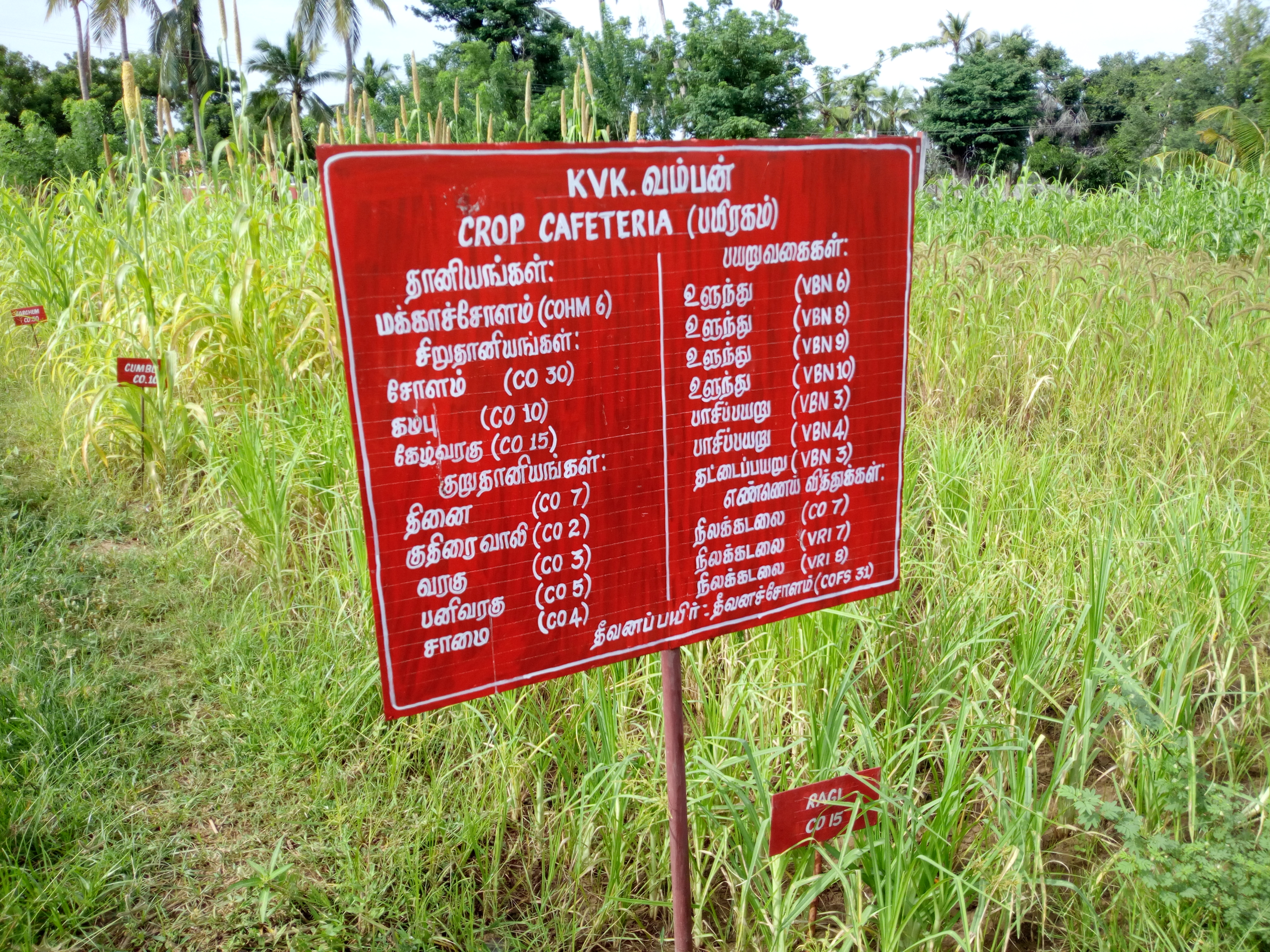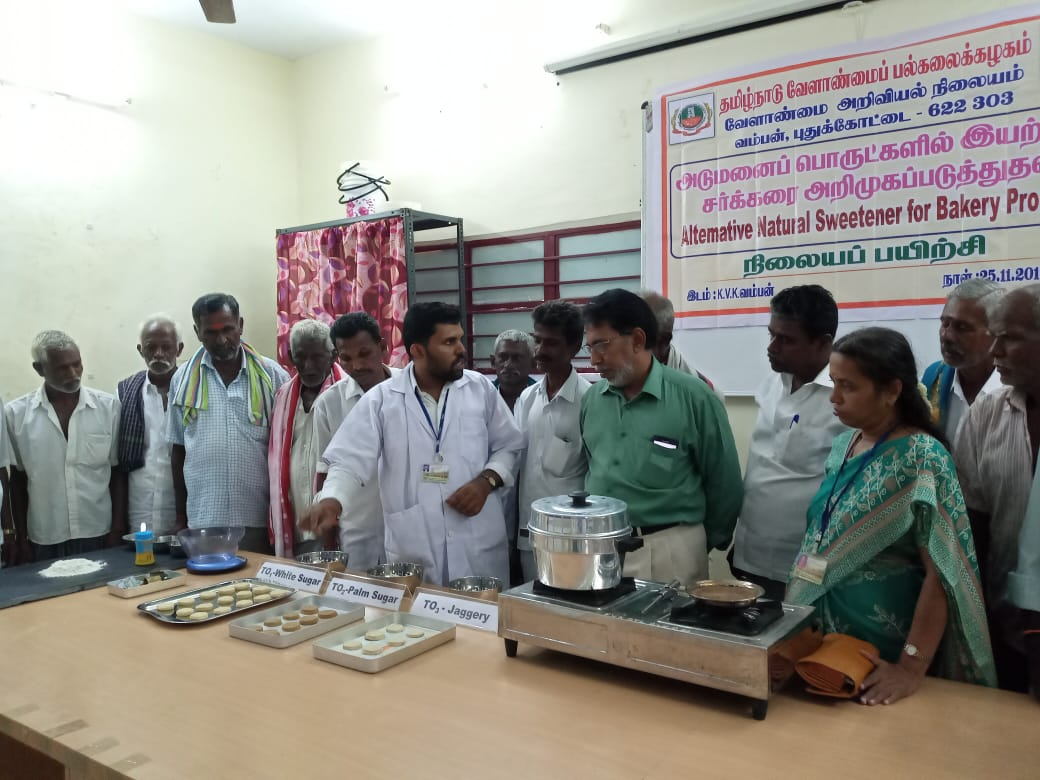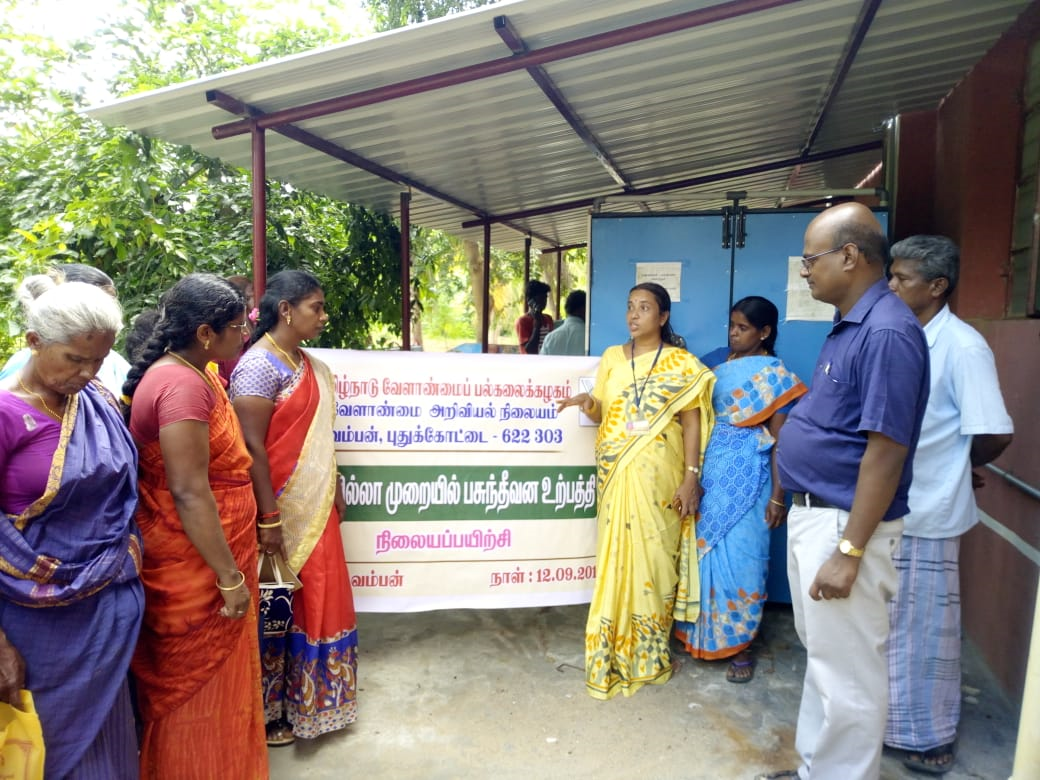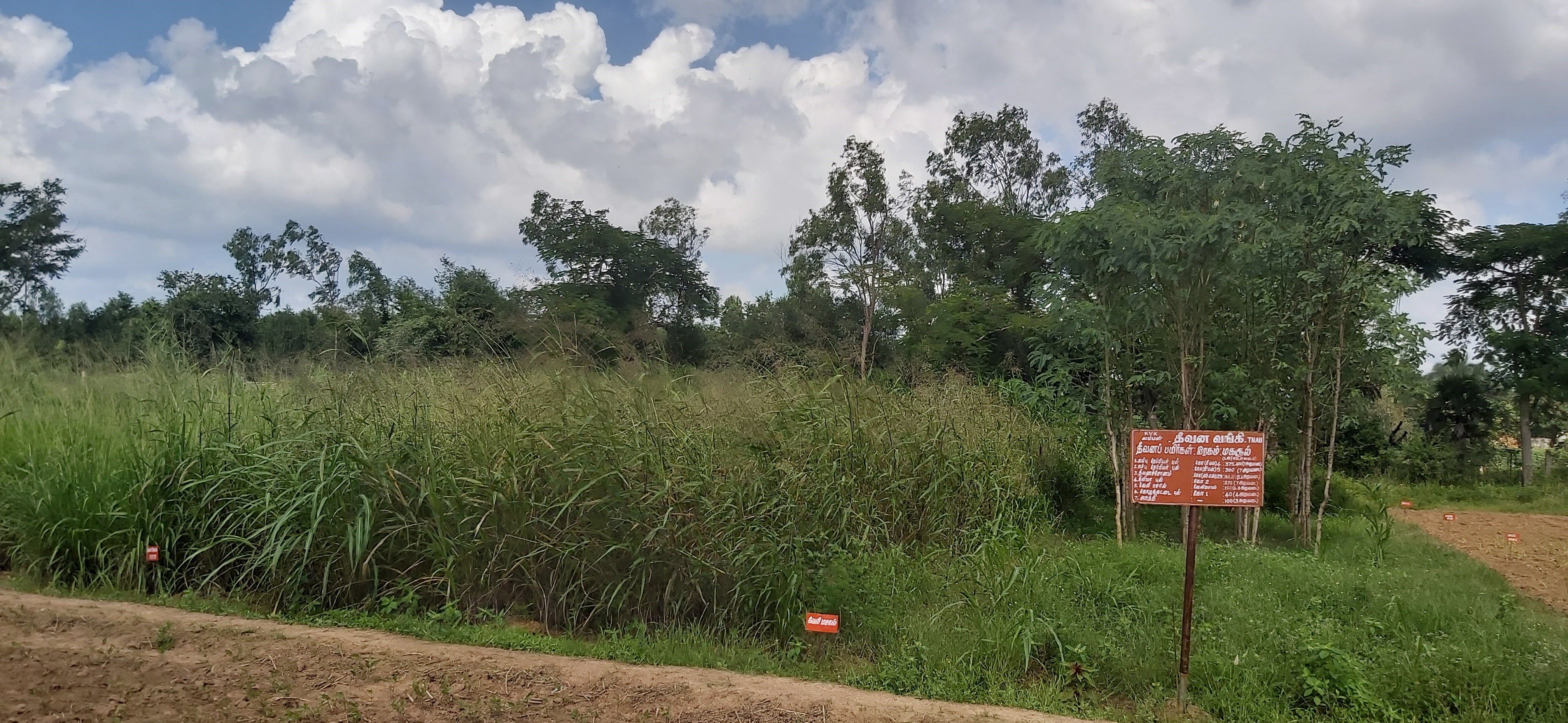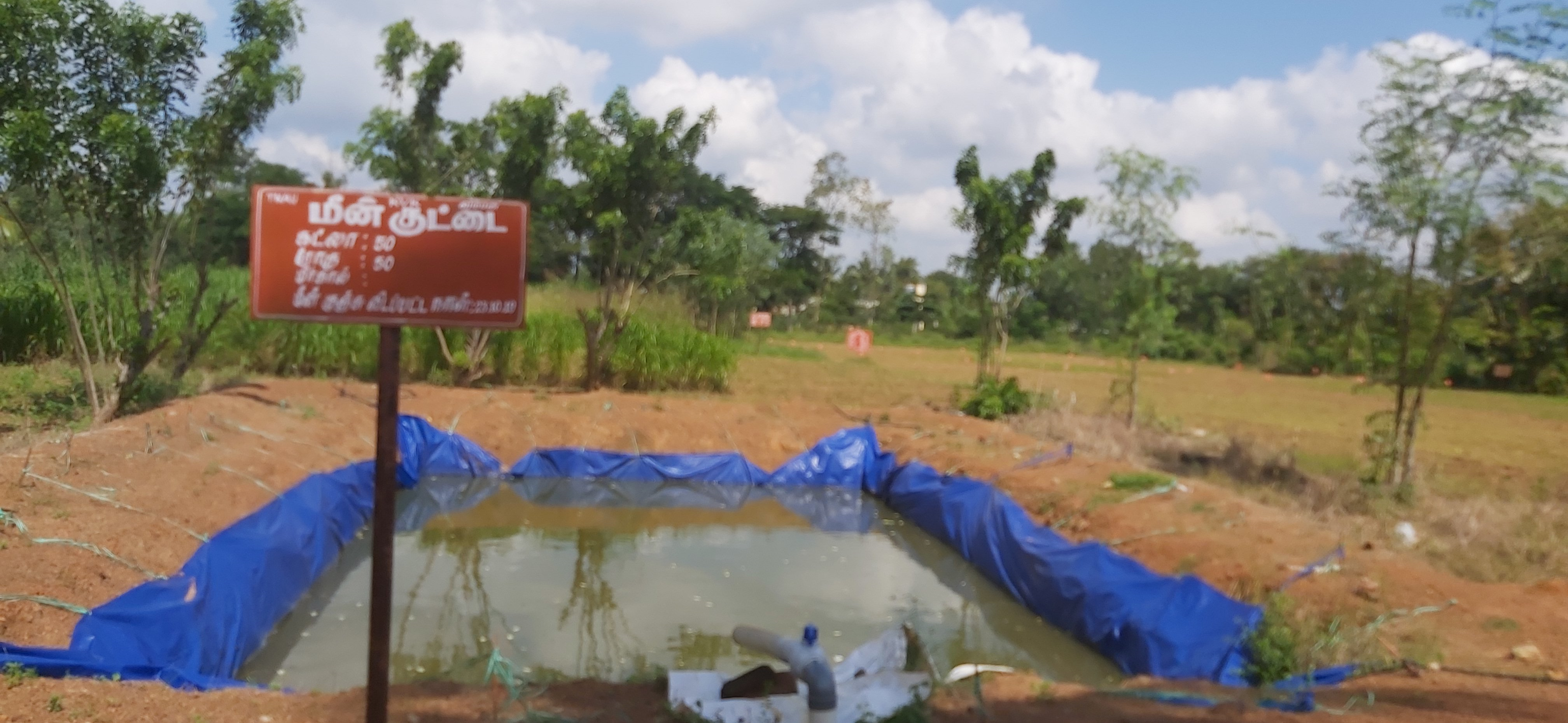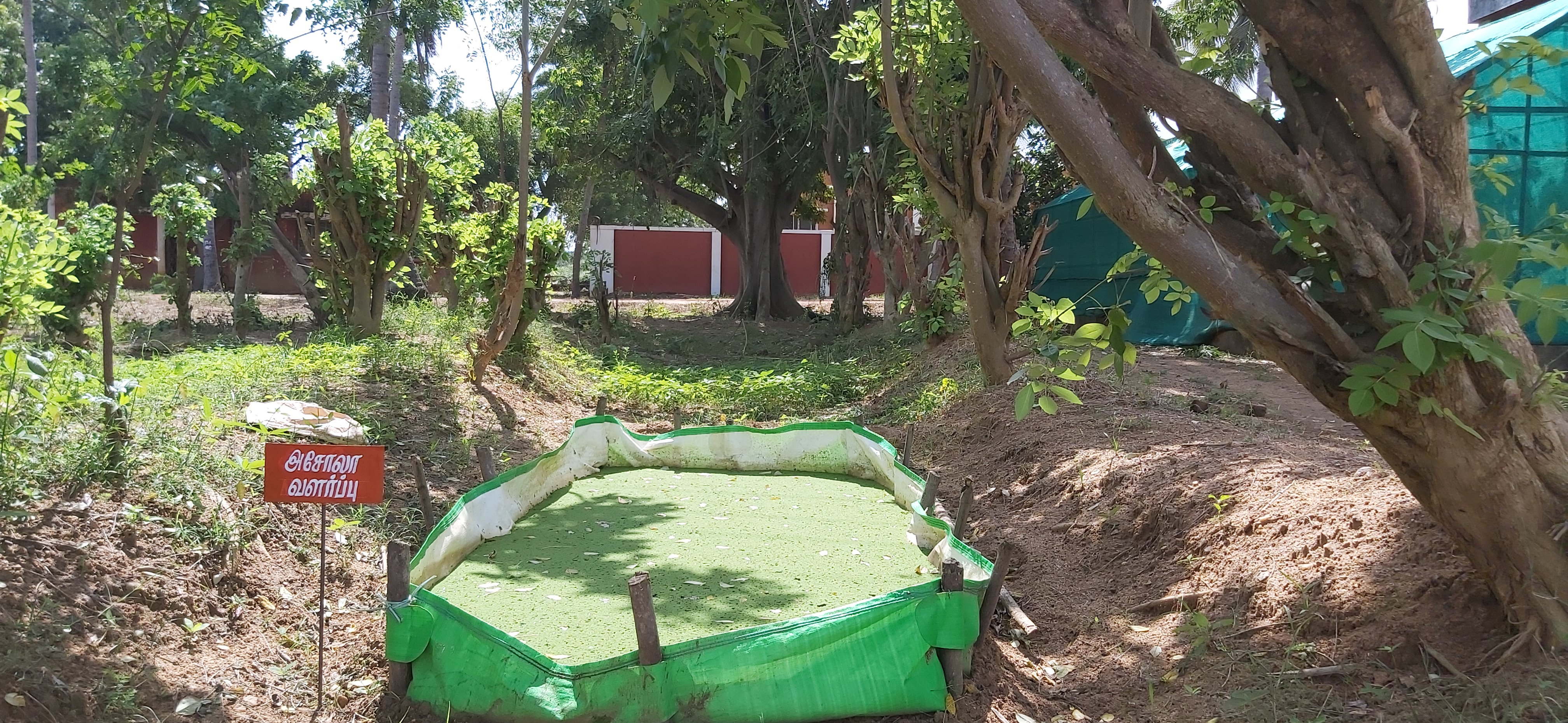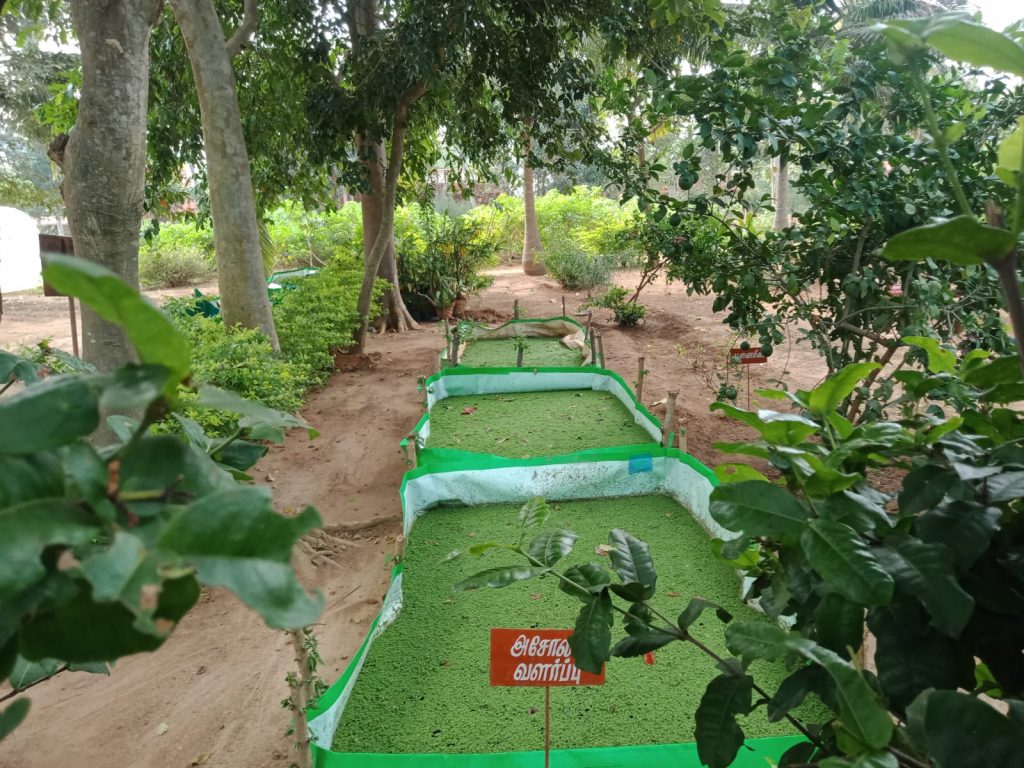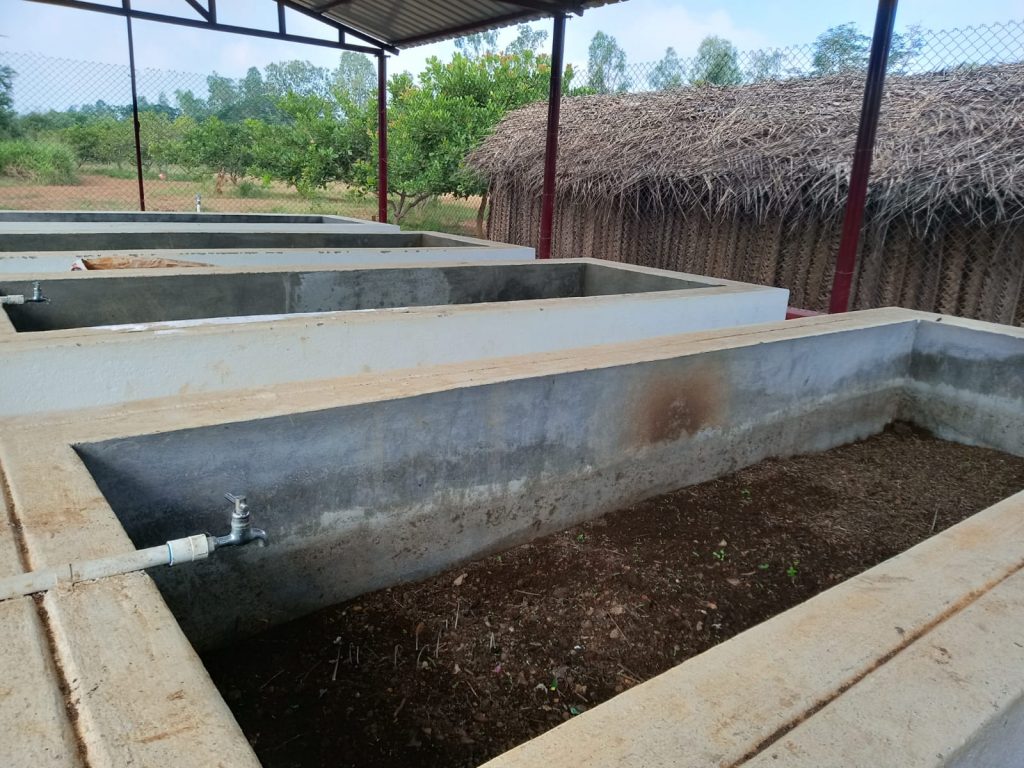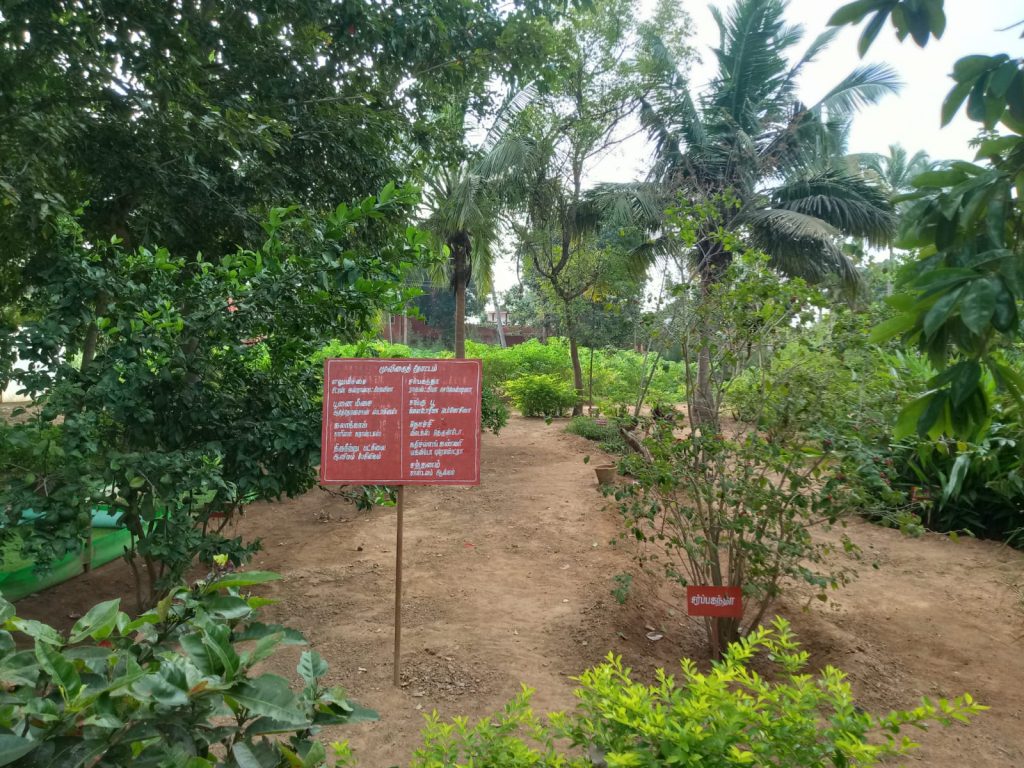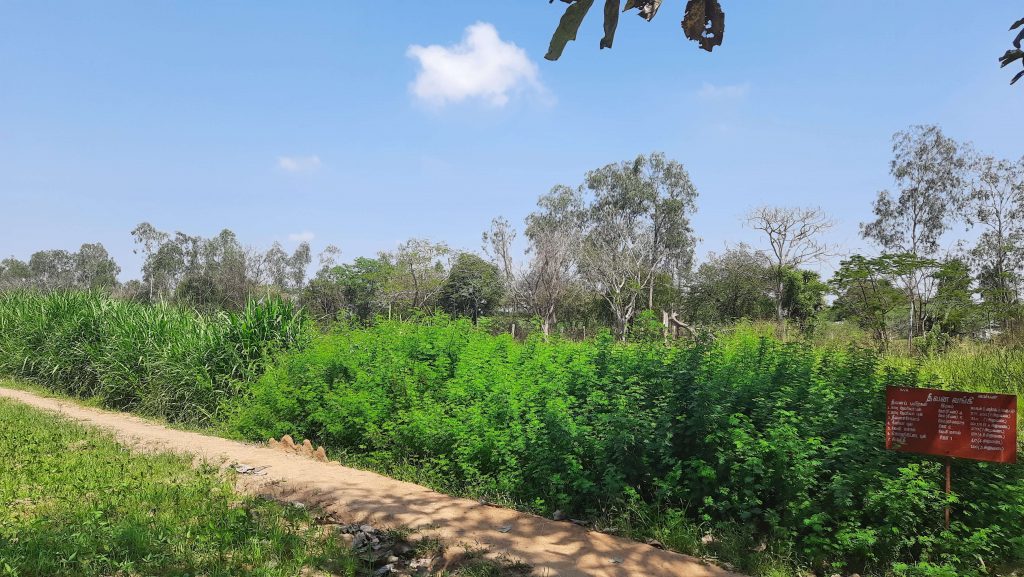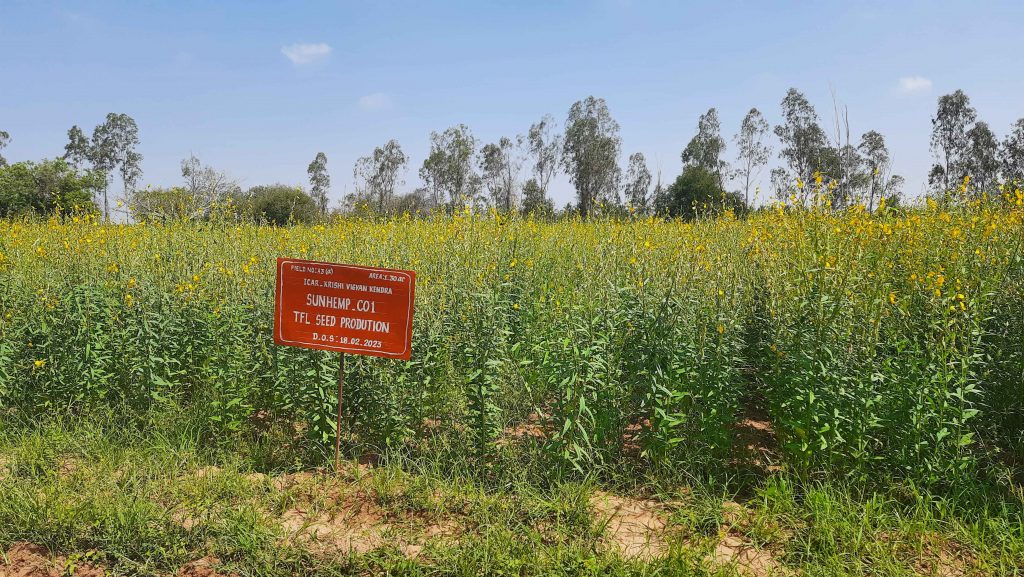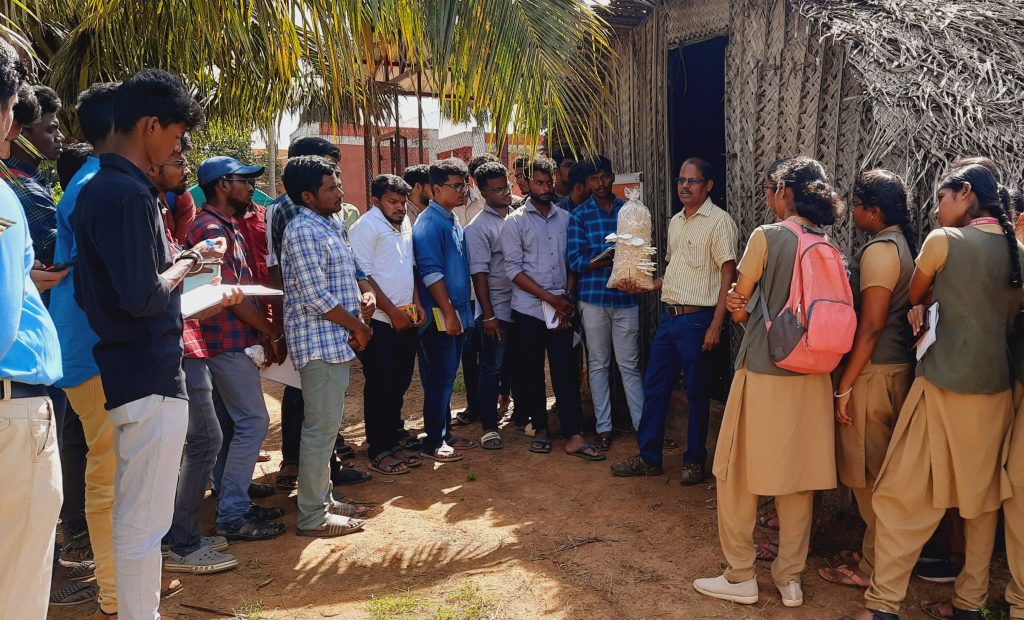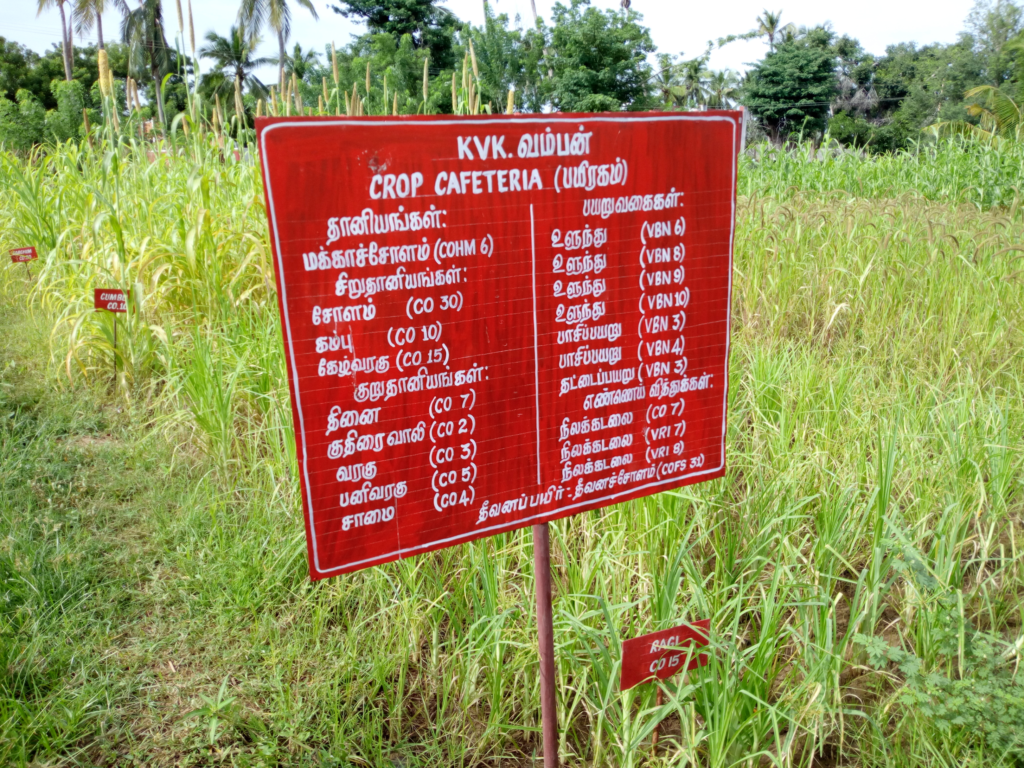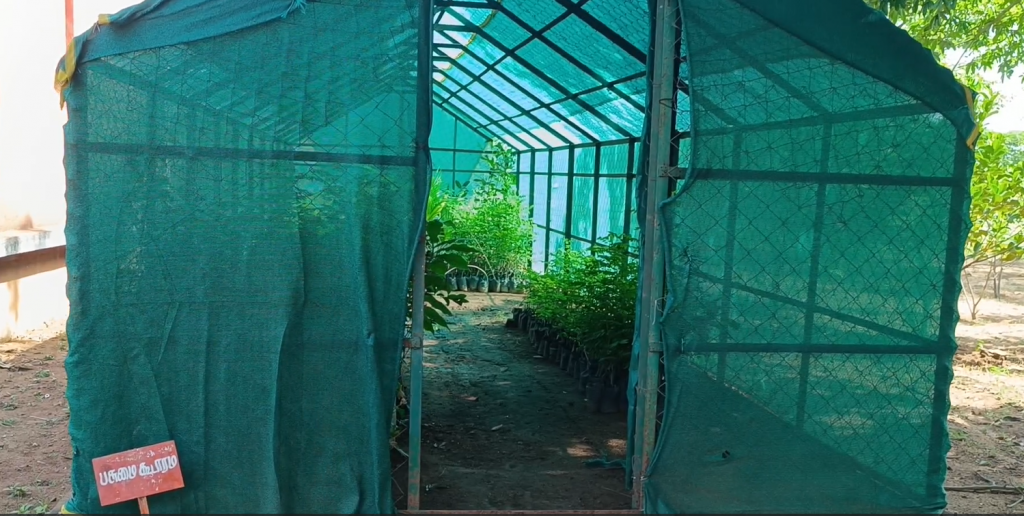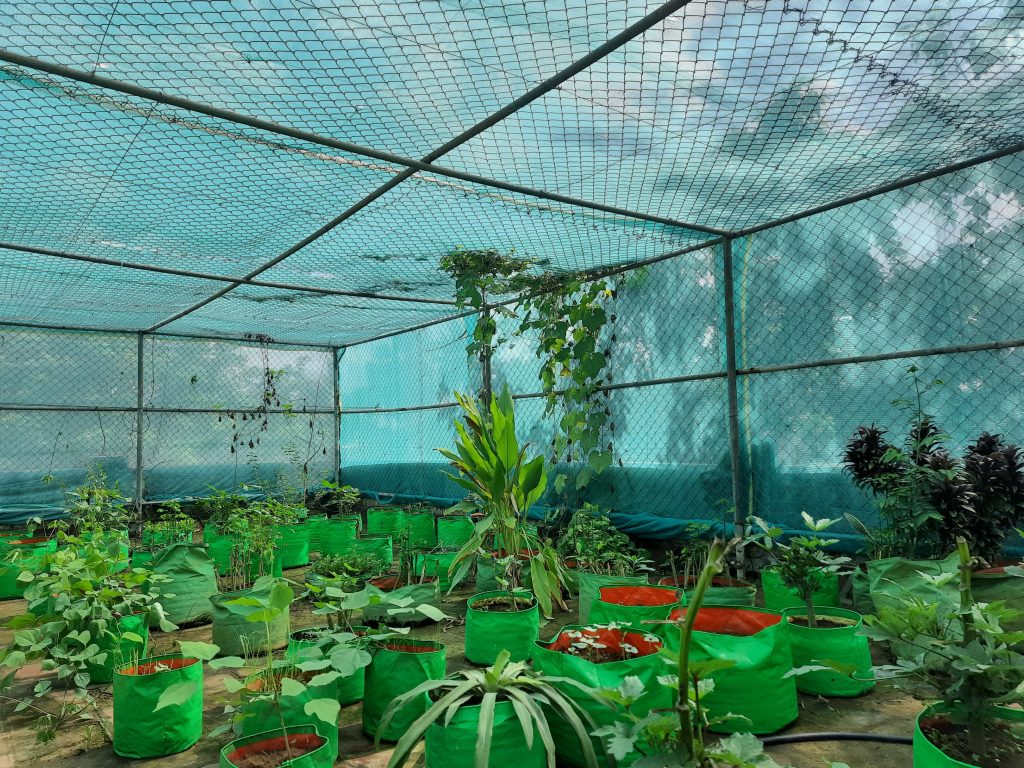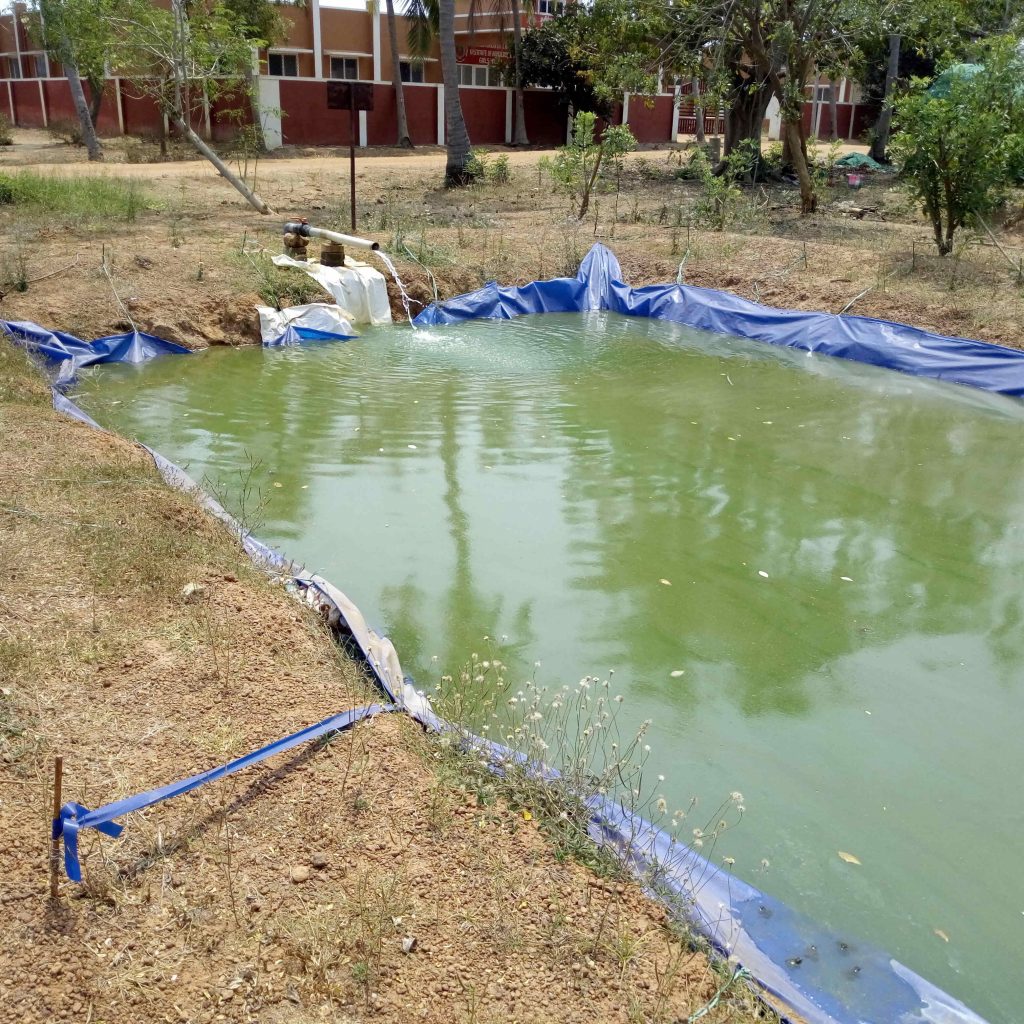Demo Units
Azolla Production Unit
Azolla is an aquatic floating fern, found in temperate climate suitable for paddy cultivation. The fern appears as a green mat over water. The Blue Green Algae cyanobacteria (Anabaena azollae) present as a symbiont with this fern in the lower cavities actually fixes atmospheric nitrogen. The rate of nitrogen fixed is around 25 kg/ha.
Azolla production unit has been established at KVK, Vamban in which azolla fern is being cultivated and harvested frequently. The harvested azolla is utilized as feed material for poultry.
Vermicompost production unit
Four vermi compost production units is established in this Kendra with the worms viz., Eisenia foetida and E. enginea. The vermicompost is being collected at regular intervals and sold to the needed person and a part is utilized in the KVK and NPRC farm for high quality of seeds and seedling production. Farmers are also being trained at periodic intervals.
Herbal garden model farm
Herbal garden in a size of 25 x 20 metre was established at KVK, Pudukottai. In which, the herbal plants viz., Aloe vera, , Andrographis paniculata, , Centella asiatica, Occimum santum, Phyllanthus niruri, Adhatoda zeylanica, Ocimum basilicum, Coleus aromaticus, Solanum nigrum and Solanum trilobatum,Vetiver, Malaivembu were planted and grown as a model for large scale cultivation. Besides, cuttings from the herbal plants were also being taken and multiplied in the poly bags and sold to the needed people.
Fodder bank
A model fodder bank unit is established at KVK in an area of 25 cents. In this fodder unit, recently released fodder sorghum var. COFS 29, COFS 31, Guinea grass, Kolukattai grass, Cumbu Napier grass COCN 4 & COCN 5, Hedge Lucerne, Sesbania rostrata and Glyricidia are maintained.
Hybrid Napier – Cumbu Napier Ottupull / Bajra Napier Hybrid
- This is a perennial grass fodder.
- It possesses more tillers and leaves than Napier grass and is more vigorous and higher in fodder yield and quality.
- Crude protein ranges from 8 to 11%.
- Co.CN4 is a recent hybrid Napier grass released by TNAU, Coimbatore, which is a cross between Cumbu Co.8 and Napier grass F.T.461. Yield range is 380-400 tons/ha. It produces more tillers with soft and juicy stem, free from pest and diseases and non-lodging. It can be cultivated throughout the year under irrigated conditions.
- KKM-1 Cumbu Napier: This is a hybrid grass that gives average green fodder yield of 288 tonnes per ha per year. The quality is good with high calcium, magnesium and phosphorus and very low oxalate content.
- Pusa Giant, NB 21, NB 37, IGFRI 5, IGFRI 7 and IGFRI 10 (developed from Indian Grassland Research Institute, Jhansi) are superior hybrids developed in India.
- Co1, Co2 and Co3 are also superior varieties released from Tamil Nadu Agricultural University. These varieties are suitable for growing throughout the year in all districts of Tamil Nadu.
- 40,000 slips are required to plant one hectare.
- First harvest is to be done on 75 to 80 days after planting and subsequent harvests at intervals of 45 days.
- HN grass can be intercropped with Desmanthus at 3:1 ratio and can be harvested together and fed to the animals.
Seed Production unit
Seed production plot is maintained and Breeder and the Foundation seeds were produced and sold to the farmers
Mushroom demo unit
Mushroom demo unit It is is available at KVK, Vamban for producing Oyster mushroom (variety PF1). There is consistency in demand for mushroom as they are rich in nutrient and part of the menu for many people. Mushroom cultivation offers a wide range of activities that can be suited for people with various needs, interests and capabilities. Moreover, it involves repetitive activities that can be easily learnt by all people. Mushroom cultivation can be started at a very low cost. Mushrooms, however, are just one of the many products that can be used in entrepreneur development for people in rural areas
Slater Goat Rearing
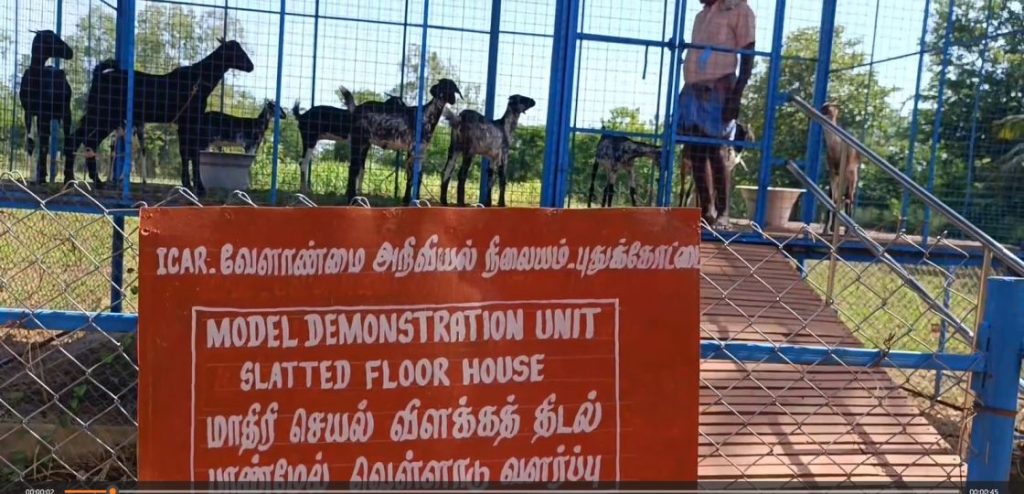
Slater Goat House is available in KVK,Vamban for rearing of goats for meat
- Rams or bucks kept for breeding purpose are housed individually in these sheds. Alternatively, wooden partitions can be raised in bigger shed to partition in to stalls.
- The dimension is of 4m (l) ×2.5m (w) ×3m (h) and can accommodate about 3 rams/ bucks.
- The shed shall be partitioned lengthwise to form three equal compartments.
- The partition between each shed should not exceed one metre.
- The partitions may be either of wooden planks or half-cut ballis.
- The partition shall be not more than one metre high from the floor.
Crop Cafeteria
Crop cafeteria established in this KVK. The crops viz., Pulses, millets, oilseeds and forage crops were raised for the benefit of farmers
Crop cafeteria of Kharif and rabi agronomic crops grown at KVK instruction farm in every years of both the seasons. To showed the efficient crop technology and varietal differences in predominant crops in Pudukkottai district
Shade net
In KVK, Vamban Shade net is being utilized for raising seedlings and offering intensive training on quality seedling production
Greenhouses are frames of inflated structure covered with a transparent material in which crops are grown under controlled environment conditions. Greenhouse cultivation as well as other modes of controlled environment cultivation have been evolved to create favorable micro-climates, which favours the crop production could be possible all through the year or part of the year as required. Greenhouses and other technologies for controlled environment plant production are associated with the off-season production of ornamentals and foods of high value in cold climate areas where outdoor production is not possible. The primary environmental parameter traditionally controlled is temperature, usually providing heat to overcome extreme cold conditions. However, environmental control can also include cooling to mitigate excessive temperatures, light control either shading or adding supplemental light, carbon dioxide levels, relative humidity, water, plant nutrients and pest control.
Roof Top Garden
Benefits of Roof Garden
- Aesthetic effects
- Acts as natural insulation for hot and cold air and a save energy for your building
- Reduces CO2 levels and increases oxygen and improved air quality
- Improves thermal insulation and energy efficiency
- Provides protection to buildings from adverse temperature and hence improves the life expectancy of the buildings
- Mitigate urban island heat effect
- It holds rain water, providing food and shelter for wildlife
IFS model -Fish pond
IFS model – Fish Pond
A model IFS unit with fish culture is establish in our Kendra and which facilitate IFS approach to the farmers in wet land condition with poultry and fish rearing to get additional income in the farming enterprise. 1 cent fish pond is available at KVK, Vamban. In the fish pond, Catla and roghu fish were grown

